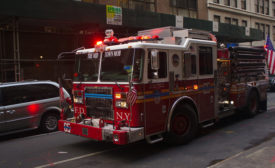Workplace Safety Culture
Improving public alerts in emergency situations
New standards offer guidelines for emergency response
November 16, 2015
A NIOSH Science Blog post
New research identifies 5 best practices for keeping contractors safe
October 12, 2015
Never miss the latest news and trends driving the safety industry
eNewsletter | Website | eMagazine
JOIN TODAYCopyright ©2024. All Rights Reserved BNP Media.
Design, CMS, Hosting & Web Development :: ePublishing





